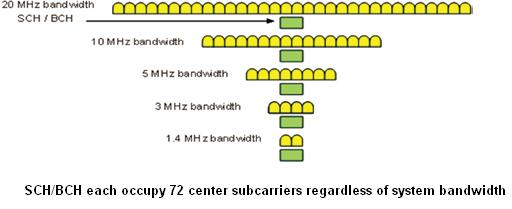Here I write about each and every channel of LTE with its Functionality. How many channel and what its work.
LTE Channel Functionality. List of channel with its work
Physical channels
- PDSCH: Physical Downlink Shared Channel
- PBCH: Physical broadcast channel
- PMCH: Physical multicast channel
- PDCCH: Physical Downlink Control Channel
- PCFICH: Physical control format indicator channel
- PHICH: Physical Hybrid ARQ Indicator Channel
Reference Signal (RS)
- Cell specific RS
- UE-specific RS
- MBSFN RS
Synchronization Signal (SCH)
- Primary Synchronization Signal (P-SCH)
- Secondary Synchronization Signal (S-SCH)
SCH used for:
- Symbol synchronization
- Frame synchronization
- Cell-ID determination
 BCH indicates:
BCH indicates:
- Basic L1/L2 system parameters
- Downlink system bandwidth
- Reference-signal transmit power
- Multi-media Broadcast over a Single Frequency Network (MBSFN)-related parameters
- Number of transmit antennas
- HARQ resource allocation
Control region is 1-3 OFDM symbols at the beginning of each subframe, composed of control channel elements (CCEs)
- 4 Res = Resource element group (REG)
- 9 REGs = 1 CCE
PCFICH – Physical Control Format Indicator Channel
- # of OFDM symbols of control region
PHICH – Physical Hybrid ARQ Channel
- ACK/NACK signaling
PDCCH – Physical Downlink Control Channel
- Scheduling
- UL power control
LTE Channel Functionality
- Physical Channels: These channels are responsible for the actual transmission of data over the air interface. They include:
- Physical Downlink Shared Channel (PDSCH): Transmits downlink user data to the mobile device.
- Physical Uplink Shared Channel (PUSCH): Carries uplink user data from the mobile device to the base station.
- Physical Control Format Indicator Channel (PCFICH): Conveys information about the number of OFDM (Orthogonal Frequency Division Multiplexing) symbols used for control signaling.
- Physical Hybrid ARQ Indicator Channel (PHICH): Provides acknowledgment or negative acknowledgment (ACK/NACK) for uplink data.
- Logical Channels: Logical channels carry higher-layer information and are used for control and management purposes. They include:
- Logical Control Channel (LCC): Handles control information like scheduling requests and power control commands.
- Logical Traffic Channel (LTC): Carries user data between the MAC (Medium Access Control) and RLC (Radio Link Control) layers.
- Transport Channels: These channels serve as an interface between the higher-layer protocols and the physical layer for efficient data transfer. Examples include:
- Broadcast Channel (BCH): Transmits system information and cell-specific parameters.
- Multicast Broadcast Single Frequency Network Channel (MBSFN): Facilitates efficient multicast and broadcast services.
- Physical Random Access Channel (PRACH): Used for initial access and random access requests from mobile devices.
- Control Channels: Control channels are essential for coordination between the base station and mobile devices. They include:
- Physical Control Channel (PCCH): Transmits control information relevant to all users within a cell.
- Physical Downlink Control Channel (PDCCH): Carries scheduling assignments and other control information for downlink data.
- Physical Uplink Control Channel (PUCCH): Used by mobile devices to transmit control information to the base station.
In essence, LTE channels form the backbone of the LTE communication system, enabling the transmission of user data, control signals, and management information. These channels work together to ensure efficient and reliable wireless communication, making LTE a versatile and widely adopted technology for high-speed mobile data services.